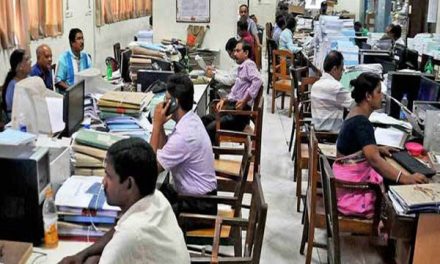Bank fixed deposit (FD) is one of the most popular investment tools in our country. It is preferred by investors as it is considered to be safe and secure and earn guaranteed returns. Depending upon your need, you can choose FD with a tenure of 7 days to as long as 10 years. Bank FDs can be easily liquidated whenever needed. However, a premature withdrawal will attract some penalty. Like SBI charges a penalty of 0.5% for retail term deposit of up to ₹5 lakh across tenures. However, there are ways to avoid penalty on premature withdrawal of fixed deposit, also known as term deposit.
Bank FD laddering is a technique that involves buying multiple FDs maturing at different time periods. It is a better way to manage liquidity. All you need is to divide your lumpsum investment into smaller investments. For example, if you have ₹5 lakh to invest in fixed deposits, you can break it into five smaller FDs and invest across different maturities. This way you can have five FDs maturing after one year, two years, three years, four years, and five years in a row. This way you will have ample liquidity, and if you need money in the interim period, you can opt for pre-mature withdrawal only to the extent of the money required.
For example, if there is a medical emergency and you need ₹2 lakh. If you have one fixed deposit of ₹5 lakh, and you break it you will have to pay the penalty of premature withdrawal charges for the entire amount. Instead, if you have five fixed deposits of ₹1 lakh each, you may choose to break only two fixed deposits. And the remaining money will keep fetching an interest at the rate you booked the FD. You can keep reinvesting and in this way, you will always have ample cash maturing in specific intervals to serve your purpose. You can choose the ladder as per your convenience and requirement, it’s not necessary to divide the entire amount equally. You can also compare the FD interest rates and choose different banks for laddering and take advantage of insurance of ₹5 lakh on your deposits.
Sweep-in Account:
Locking in funds for a long term in FD is a big problem for investors whose concern is liquidity. They can opt for a sweep-in fixed deposit account that provides both the interest rate of an FD along with liquidity of a savings account. The interest rates of a sweep-in fixed deposit account are similar to a regular FD. Investors also enjoy the liquidity benefits of a savings account.
There is also no penalty charged on utilizing funds or on premature withdrawals in sweep-in accounts. Sweep-in accounts are also known as 2-in-1 account or a money multiplier account.
If you choose a sweep-in deposit account, any amount above a certain threshold limit in the saving account is automatically converted into an FD. For instance, if you have Rs 2 lakh in your savings account and you have set the threshold limit at Rs 50,000, then the excess of Rs 1.5 lakh will automatically be moved out and converted into an FD. However, if you have insufficient funds in your savings account, withdrawals from your FD will be made and funds will be moved back into the savings account, to bridge the deficit. Hence experts suggest maintaining enough balance in the savings account so that one’s FDs don’t get disrupted.
Laddering:
By taking the laddering approach while investing in a fixed deposit, you can manage the interest rate risk in a better way and also provide some liquidity to funds. To ‘ladder’ one’s deposits mean, you spread the investment across different tenures. With this investment strategy, you put your investment in one or more financial products with different maturity dates. Experts suggest if the interest rate environment is unfavorable, this helps avoid the risk of re-investing and also does not restrict investors to one product. You can also invest across bonds and FDs at varying maturities.
You can spread your investment across 1, 3, and 5-year fixed deposits instead of locking in funds, say, in a 1-year deposit. You can also renew your FDs for the longest duration and continue the process as and when the various FDs get matured.
Avail Loan against FD:
You can also take a loan as all banks allow investors to take a loan against their fixed deposits. The interest charged for a loan on a fixed deposit is generally 1-2 percent above the interest paid on the deposit. The interest rate, however, depends and varies from bank to bank. Industry experts say taking a loan against fixed deposits has its advantage for the investor instead of opting for a personal loan. The interest rates on loan against fixed deposits are generally lower than personal loans as they are secured by the underlying deposit.
For loan against fixed deposits, the State Bank of India (SBI) charges interest on a daily reducing balance, without any processing fee and pre-payment penalties. The bank offers loans at 1 per cent above the relatively fixed deposit rate. While opting for a loan against fixed deposit some banks give up to 90 per cent of the value of the fixed deposits with the bank. You can take such a loan for any term, up to the deposit’s tenure.











